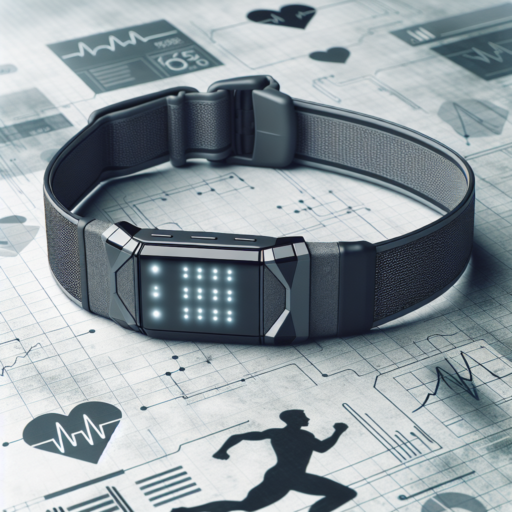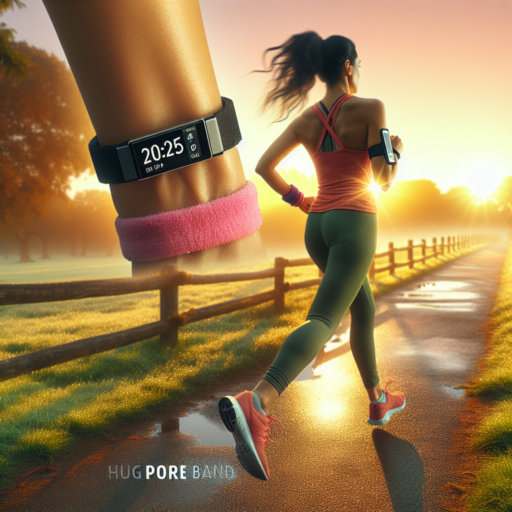No se han encontrado productos.
Why Choose a Bluetooth Heart Rate Chest Strap?
Opting for a Bluetooth Heart Rate Chest Strap offers unparalleled accuracy and convenience for those looking to precisely monitor their cardiovascular performance during physical activity. Unlike wrist-worn devices, chest straps provide a more reliable reading by measuring electrical activity directly from the heart, ensuring that every beat counts towards understanding your overall fitness level.
One significant advantage of choosing a Bluetooth-enabled model is the seamless integration with a wide array of devices. Whether it’s your smartphone, sports watch, or dedicated fitness tracker, these chest straps are designed for easy pairing and data sharing. This wireless connectivity means you can have real-time insights into your heart rate zones, allowing you to adjust your intensity on the fly for optimized workouts.
Moreover, the comfort and durability offered by modern Bluetooth Heart Rate Chest Straps are second to none. Made from soft, flexible materials that conform to your body, they ensure a snug fit without compromising on comfort during extended wear. Sweat and water resistance further enhance their appeal, making them suitable for all exercise conditions, from high-intensity interval training (HIIT) sessions to long marathon training runs.
Top Benefits of Using a Bluetooth Heart Rate Chest Strap
Monitoring your heart rate is crucial for understanding your physical health and improving your exercise performance. With the advent of Bluetooth technology, heart rate chest straps have become an essential tool for fitness enthusiasts and professionals alike. Here are some of the top benefits of using a Bluetooth heart rate chest strap.
Accurate and Real-Time Monitoring
One of the key benefits of a Bluetooth heart rate chest strap is its ability to provide accurate and real-time heart rate data. Unlike wrist-based trackers, chest straps measure electrical signals directly from the heart, ensuring that the readings are precise. This level of accuracy is particularly important during intense exercise sessions when the heart rate needs to be monitored closely to gauge effort and recovery.
Comfort and Convenience
Bluetooth heart rate chest straps are designed for comfort and convenience. They are lightweight, easy to wear, and do not interfere with movements, making them ideal for long workouts or competitive events. Additionally, the Bluetooth connectivity allows for a seamless connection with smartphones, watches, and fitness equipment, providing an integrated workout experience without the hassle of wires.
Enhanced Training Insights
Utilizing a Bluetooth heart rate chest strap provides users with enhanced training insights. By analyzing heart rate variability and other metrics derived from accurate heart rate data, individuals can optimize their training plans, focus on specific heart rate zones, and monitor progress over time. This data-driven approach helps in fine-tuning workout intensity, improving endurance, and achieving fitness goals more efficiently.
How to Use a Bluetooth Heart Rate Chest Strap Effectively
Using a Bluetooth heart rate chest strap can significantly enhance your fitness tracking and training effectiveness. To use it effectively, it’s crucial to understand the best practices for setup and maintenance. This guide walks you through these essential steps.
Proper Positioning and Fit
Ensuring the chest strap is properly positioned is key to getting accurate readings. The strap should be worn just below the chest muscles, snug enough that it doesn’t slide down during activity but not so tight it restricts breathing. Moistening the sensors on the back of the strap can also improve connectivity and accuracy of the readings.
Pairing With Your Device
Before starting your workout, pair the Bluetooth heart rate chest strap with your preferred fitness app or device. This usually involves holding a button on the strap to make it discoverable, then selecting it from the Bluetooth menu on your smartphone, smartwatch, or tablet. Once paired, keep the device within a reasonable distance to ensure continuous data transmission.
Maintenance is also crucial for the longevity and accuracy of your strap. Regularly cleaning the strap according to the manufacturer’s instructions, checking for firmware updates, and replacing the battery when necessary will keep your device in top working order. Remember, consistency in where you place the strap and how tight it is can affect the consistency of the heart rate data, so pay attention to how it feels each time you wear it.
Comparing Bluetooth Heart Rate Chest Straps: Which One is Right for You?
Choosing the right Bluetooth heart rate chest strap can profoundly impact your fitness tracking and performance analysis. This essential piece of workout gear varies significantly in terms of comfort, accuracy, connectivity, and additional features. It’s not just about tracking your heart rate; it’s about finding a device that syncs seamlessly with your lifestyle and workout routine. In this comparison, we’ll delve into what makes each Bluetooth heart rate chest strap stand out, helping you make a more informed decision.
The first factor to consider is accuracy. Chest straps are generally more accurate than wrist-based heart rate monitors, thanks to their closer proximity to the heart. However, not all straps are created equal. Some employ advanced algorithms and higher sampling rates to provide readings nearly on par with medical-grade devices. This precision is crucial for athletes who rely on heart rate zones to optimize their training intensity and recovery.
Another aspect is comfort and design. A heart rate chest strap that causes irritation or shifts during rigorous activities can disrupt your focus and affect your performance. The best straps feature soft, flexible materials that conform to your body, offering a snug yet comfortable fit. Adjustable length is also a plus, ensuring it can accommodate a wide range of body sizes and shapes. Moreover, the ease of maintenance—such as the ability to swap out batteries or wash the strap—adds to the convenience factor.
Connectivity is where Bluetooth functionality comes to the fore. The ideal heart rate chest strap should easily pair with your smartphone, sports watch, or bike computer, ensuring your data is where you need it when you need it. Look for devices that support both Bluetooth and ANT+ for maximum compatibility. This universal connectivity ensures that no matter what gear you use now or in the future, your heart rate data is reliably transmitted and recorded.
The Accuracy of Bluetooth Heart Rate Chest Straps in Tracking Performance
When it comes to monitoring heart rate and tracking performance, Bluetooth heart rate chest straps have become a popular choice among athletes and fitness enthusiasts. Their popularity stems from their potential to provide real-time heart rate data, allowing users to adjust their workouts based on specific heart rate zones. The question of accuracy in these devices is crucial, as it determines their reliability in measuring performance and guiding training sessions effectively.
One of the key factors that contribute to the accuracy of Bluetooth heart rate chest straps is the placement and sensor technology. Unlike wrist-based heart rate monitors, chest straps are worn close to the heart, minimizing discrepancies and providing data that is generally considered to be more reliable. They employ electrical signals to measure the heart’s activity, which is typically more precise than the optical sensors used in many watches and wristbands. This method reduces the margin of error, potentially offering a clearer picture of an individual’s cardiovascular effort and endurance levels during physical activities.
However, the accuracy of these devices can be influenced by several factors, including the fit of the strap, the individual’s skin type, and the presence of external interferences such as electromagnetic signals from other devices. To optimize accuracy, it is crucial for users to ensure the strap is properly fitted and positioned. Signals can be skewed if the strap is too loose or too tight, leading to potential misinterpretations of intensity levels during workouts. Furthermore, manufacturers continually work on improving the algorithm and hardware design to mitigate these issues and enhance the overall accuracy of their products.
Maintaining Your Bluetooth Heart Rate Chest Strap for Optimal Performance
To ensure that your Bluetooth heart rate chest strap functions at its best, regular maintenance is crucial. This simple yet effective piece of equipment relies on accurate data transmission and good physical condition to deliver reliable heart rate readings. By keeping your device well-maintained, you not only extend its lifespan but also ensure the quality and reliability of the health data it provides.
Proper Cleaning and Storage
Cleaning your chest strap after each use is the first step in maintaining optimal performance. Sweat and moisture can degrade the strap material and affect the sensor’s accuracy over time. Use a mild soap and water solution to gently clean the strap, avoiding harsh chemicals or abrasive materials that could damage it. After washing, allow the strap to air dry completely before storing. Storing the strap in a cool, dry place away from direct sunlight will help preserve its integrity and functionality.
Regular Firmware Updates
Keeping the firmware of your Bluetooth heart rate chest strap up to date is equally important. Manufacturers often release firmware updates to fix bugs, improve functionality, and ensure compatibility with the latest devices and apps. Check the manufacturer’s website or the companion app for your chest strap regularly for any available updates. These updates can make a significant difference in how well your heart rate monitor communicates with your connected devices and apps.
Battery Care and Replacement
Finally, paying attention to the battery is crucial for the continuous performance of your heart rate chest strap. Ensure the battery compartment is clean and dry before inserting a new battery. If your device uses a rechargeable battery, follow the manufacturer’s guidelines for charging to maximize the battery’s lifespan and performance. For devices with replaceable batteries, it’s wise to have a spare one on hand, especially if you use the strap frequently. A failing battery can lead to inaccurate readings or loss of connectivity, affecting your training effectiveness.
Integrating Your Bluetooth Heart Rate Chest Strap with Fitness Apps
Connecting your Bluetooth heart rate chest strap to fitness apps can significantly enhance your workout experiences by providing detailed insights into your heart rate zones, calories burned, and overall performance. This integration allows for a more personalized training session, helping you to achieve your fitness goals more effectively. Most modern fitness apps offer an easy connection setup, ensuring your heart rate data is accurately captured and integrated into your workout summary.
Fitness enthusiasts often wonder about the compatibility of their chest strap with major fitness applications. Fortunately, most Bluetooth heart rate chest straps are designed to work seamlessly with a wide range of apps, including Strava, Zwift, Garmin Connect, and many others. The key is to ensure your device is running the latest version of its firmware and that your selected fitness app supports heart rate data integration. This often involves navigating to the settings or devices section of the app and selecting your heart rate chest strap from the list of available devices.
Once successfully connected, the real-time heart rate data provided by your chest strap can be incredibly useful for optimizing your training intensity. It allows for workouts to be tailored to specific heart rate zones, enhancing both fat burning and cardiovascular improvement efforts. Moreover, tracking your heart rate over time can reveal insights into your fitness progression, helping you to adjust your training plan as needed.
Frequently Asked Questions About Bluetooth Heart Rate Chest Straps
Bluetooth heart rate chest straps have become an indispensable tool for fitness enthusiasts looking to measure their heart rates accurately during exercise. With the rise in their popularity, several questions have emerged regarding their functionality, compatibility, and usage. Below, we address some of the most commonly asked questions to help users get the most out of their Bluetooth heart rate chest straps.
How Do Bluetooth Heart Rate Chest Straps Work?
At their core, Bluetooth heart rate chest straps monitor your heart rate by measuring the electrical activity generated by your heart as it beats. This technology, known as electrocardiography (ECG or EKG), ensures accuracy superior to wrist-based heart rate sensors. The data collected is then transmitted wirelessly via Bluetooth to a paired device, such as a smartphone or fitness watch, allowing you to monitor your heart rate in real time during workouts.
Are All Bluetooth Heart Rate Chest Straps Compatible With Each Fitness App?
Compatibility varies significantly between different brands and models of Bluetooth heart rate chest straps. Most are designed to be compatible with a wide range of fitness apps and devices that support Bluetooth connectivity. However, it’s important to check the specifications of your chosen heart rate chest strap to ensure it pairs well with your preferred fitness application. Always verify compatibility before purchase to avoid connectivity issues.
What Should I Look for When Choosing a Bluetooth Heart Rate Chest Strap?
Selecting the right Bluetooth heart rate chest strap involves considering several key factors. Look for straps that offer high accuracy, comfort, and easy maintenance. Additionally, battery life is a critical consideration, as longer battery life means less frequent charges and more uninterrupted workout sessions. It’s also beneficial to choose a strap that is water-resistant, especially if you plan on engaging in high-intensity workouts or activities that involve a lot of sweating.
Troubleshooting Common Issues with Bluetooth Heart Rate Chest Straps
Experiencing difficulties with your Bluetooth heart rate chest strap can be frustrating, especially when it interrupts your training session. Common issues often include connectivity problems, inconsistent heart rate readings, and discomfort during use. By understanding how to swiftly identify and address these concerns, you can ensure that your heart rate monitoring remains an integral, yet unobtrusive, part of your exercise routine.
Addressing Connectivity Problems
Connectivity issues are frequently at the forefront of problems with Bluetooth heart rate chest straps. These can be caused by everything from the physical distance between the strap and your device to interference from other wireless devices. To enhance connectivity, ensure your strap is within the recommended range of your device. Additionally, checking for firmware updates for your chest strap or resetting its connection can often resolve these issues, providing a more reliable link for your training data.
Improving Heart Rate Reading Accuracy
Inaccurate heart rate readings can significantly impact your training effectiveness. Factors such as incorrect strap positioning, poor skin contact, or even low battery can affect the accuracy of the data recorded. To improve heart rate reading accuracy, make sure the strap is snug against your body and positioned directly below the chest muscle. Moistening the sensors before use can also enhance conductivity and ensure more accurate readings. It’s essential to frequently check and replace the battery if your device is not rechargeable.
Future Trends in Heart Rate Monitoring Technology
As technology leaps forward, the realm of heart rate monitoring is not left behind. We are standing on the brink of witnessing groundbreaking advancements that promise to reshape how we track and understand our heart’s behavior. The evolution of this technology aims to offer more seamless, accurate, and insightful data collection, woven into the fabric of our everyday lives.
Integration with Wearable and Smart Textiles
One of the most anticipated trends is the deeper integration of heart rate monitoring capabilities into wearable devices and smart textiles. Imagine clothes that not only fit well but also monitor your heart rate, offering real-time data without the need for traditional chest straps or wrist-worn devices. This ubiquity of heart rate monitoring will revolutionize personal health tracking, making it more accessible and less intrusive.
Advancements in Artificial Intelligence
Artificial Intelligence (AI) stands at the core of the future of heart rate monitoring. With AI, the raw data collected from heart rate monitors can be analyzed more efficiently, identifying patterns that may indicate health issues much earlier than traditional methods. This AI-driven approach not only enhances the accuracy of heart rate tracking but also paves the way for predictive analytics in personal health, offering a glimpse into potential future health scenarios based on current data.




